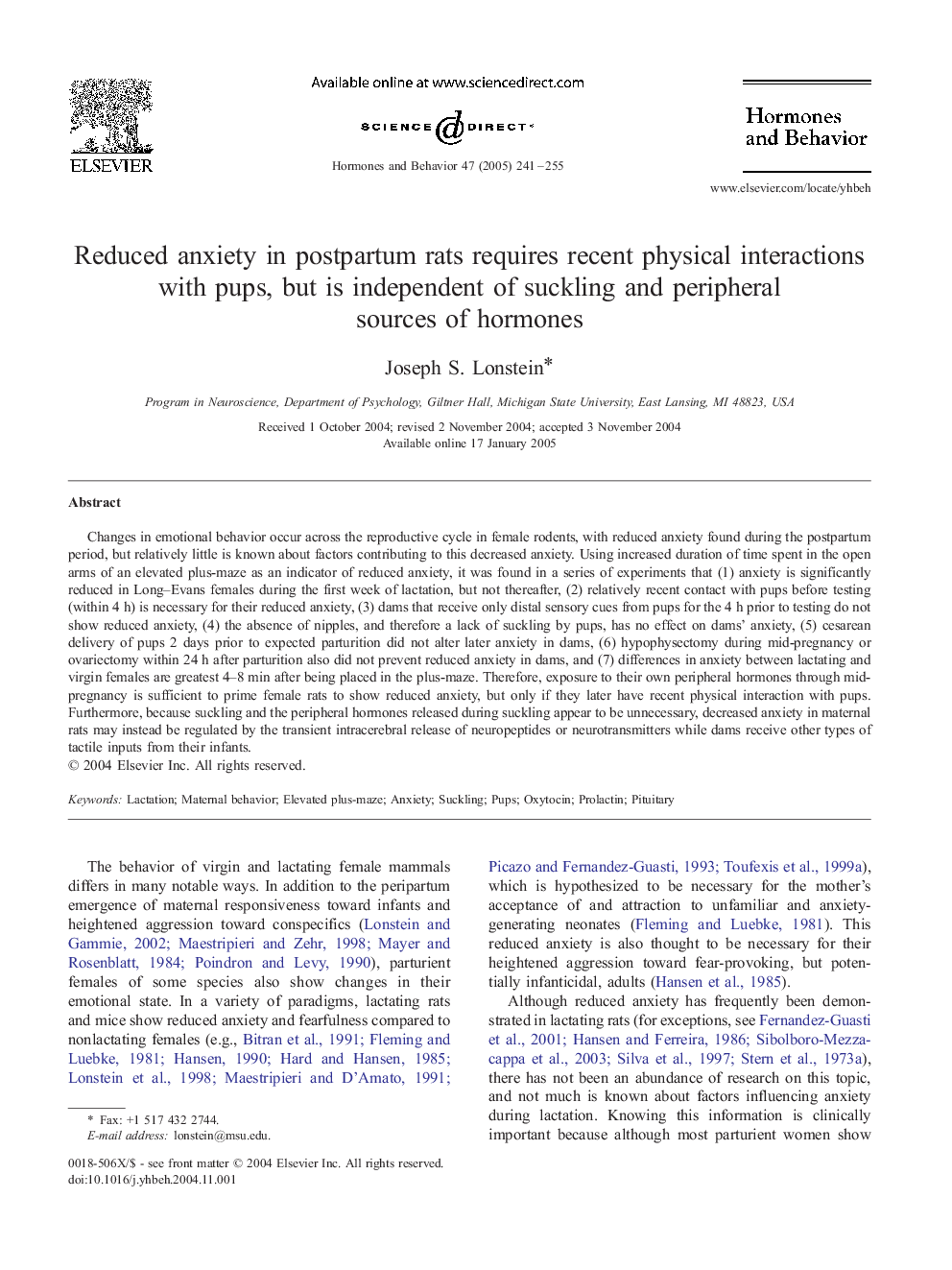| Article ID | Journal | Published Year | Pages | File Type |
|---|---|---|---|---|
| 10301569 | Hormones and Behavior | 2005 | 15 Pages |
Abstract
Changes in emotional behavior occur across the reproductive cycle in female rodents, with reduced anxiety found during the postpartum period, but relatively little is known about factors contributing to this decreased anxiety. Using increased duration of time spent in the open arms of an elevated plus-maze as an indicator of reduced anxiety, it was found in a series of experiments that (1) anxiety is significantly reduced in Long-Evans females during the first week of lactation, but not thereafter, (2) relatively recent contact with pups before testing (within 4 h) is necessary for their reduced anxiety, (3) dams that receive only distal sensory cues from pups for the 4 h prior to testing do not show reduced anxiety, (4) the absence of nipples, and therefore a lack of suckling by pups, has no effect on dams' anxiety, (5) cesarean delivery of pups 2 days prior to expected parturition did not alter later anxiety in dams, (6) hypophysectomy during mid-pregnancy or ovariectomy within 24 h after parturition also did not prevent reduced anxiety in dams, and (7) differences in anxiety between lactating and virgin females are greatest 4-8 min after being placed in the plus-maze. Therefore, exposure to their own peripheral hormones through mid-pregnancy is sufficient to prime female rats to show reduced anxiety, but only if they later have recent physical interaction with pups. Furthermore, because suckling and the peripheral hormones released during suckling appear to be unnecessary, decreased anxiety in maternal rats may instead be regulated by the transient intracerebral release of neuropeptides or neurotransmitters while dams receive other types of tactile inputs from their infants.
Related Topics
Life Sciences
Biochemistry, Genetics and Molecular Biology
Endocrinology
Authors
Joseph S. Lonstein,
